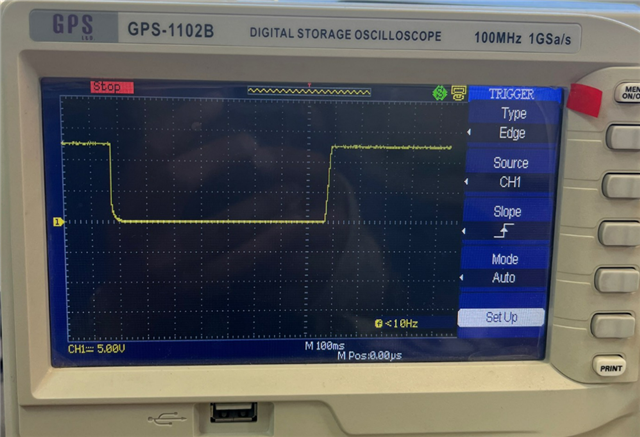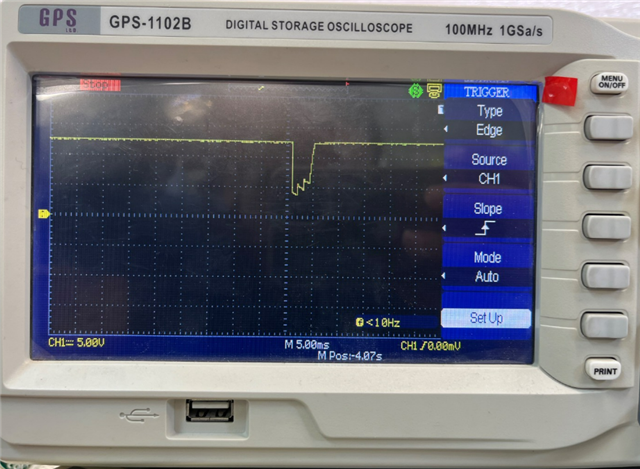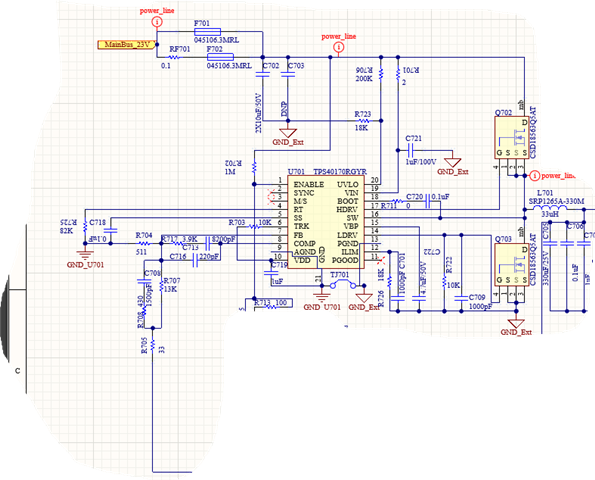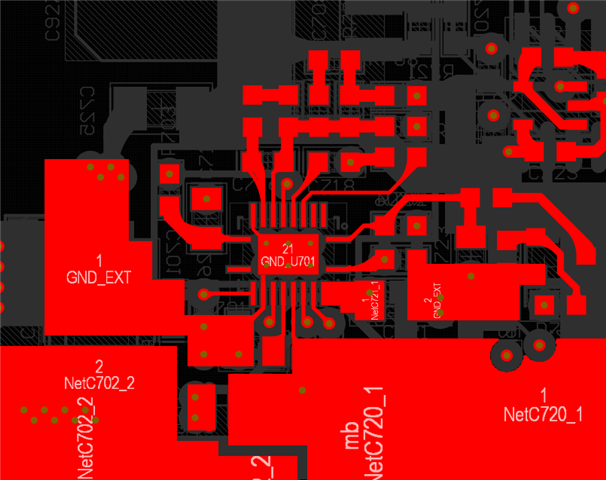Other Parts Discussed in Thread: LM5190, LM5145
Tool/software:
Hello everyone,
I have implemented the TPS40170 according to the attached schematic. My input is 20 V and the output is 12 V @ 3 A.
With purely resistive loads the converter works perfectly. However, when I connect an electronic device whose supply input contains a capacitor, the converter momentarily shuts down and then restarts. I captured this behaviour on the oscilloscope — see the first attached image.
After multiple tests I concluded that the issue is related to current protection / soft-start behaviour. Adding a soft-start capacitor did not fix the problem; in fact it increased the duration the converter stayed off. In the next test I completely removed the soft-start capacitor and also removed the resistor used for current limiting. The result is shown in the second attached image: the converter still shuts down, but the off time is much shorter.
The electronic systems I intend to power are sensitive, and these momentary shutdowns cause serious problems for them. Please advise on possible causes and recommended fixes (e.g. changes to soft-start, current-limit settings, snubbing, inrush control, layout issues, or other design considerations).
Best regards, Jacob





